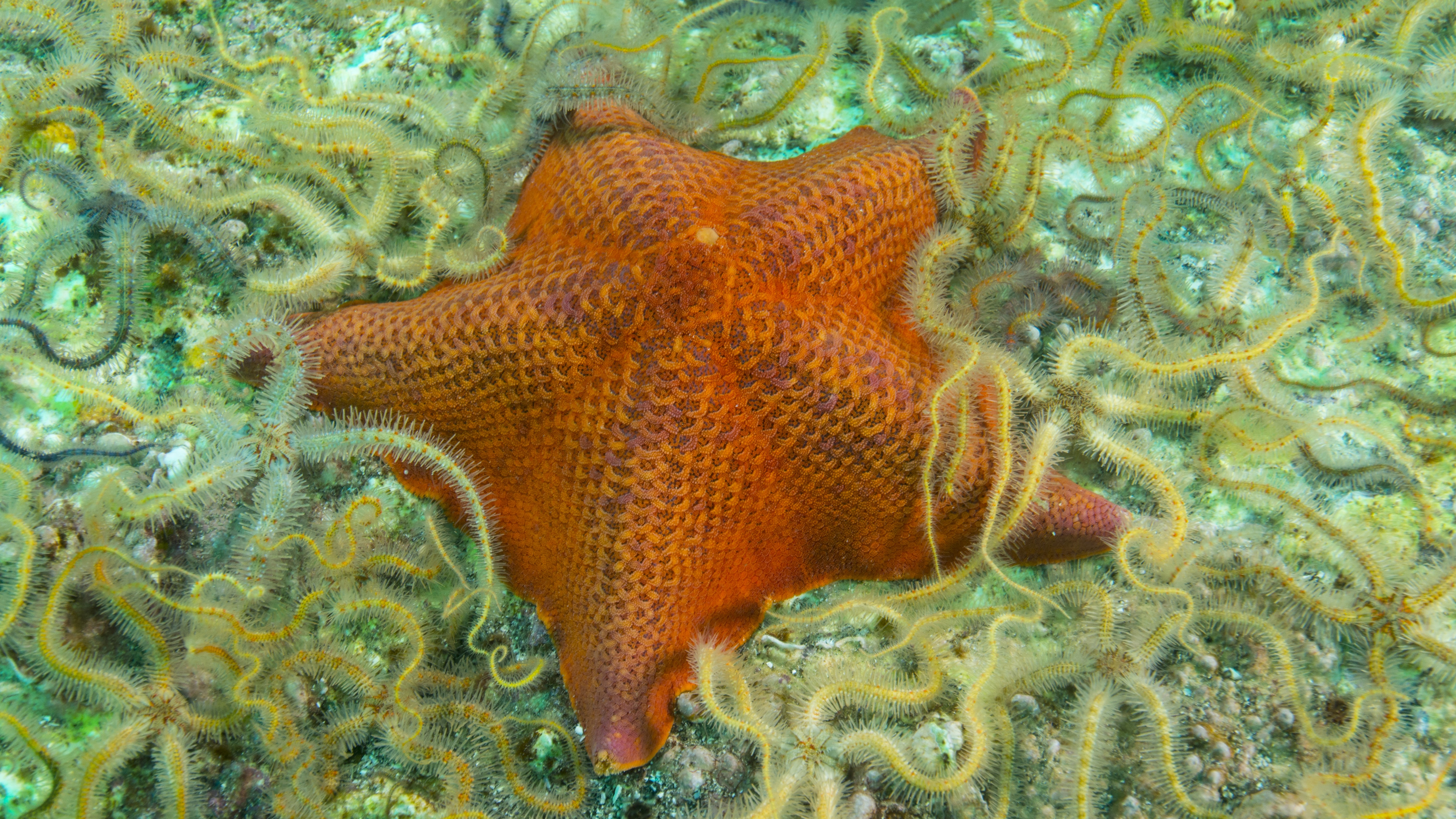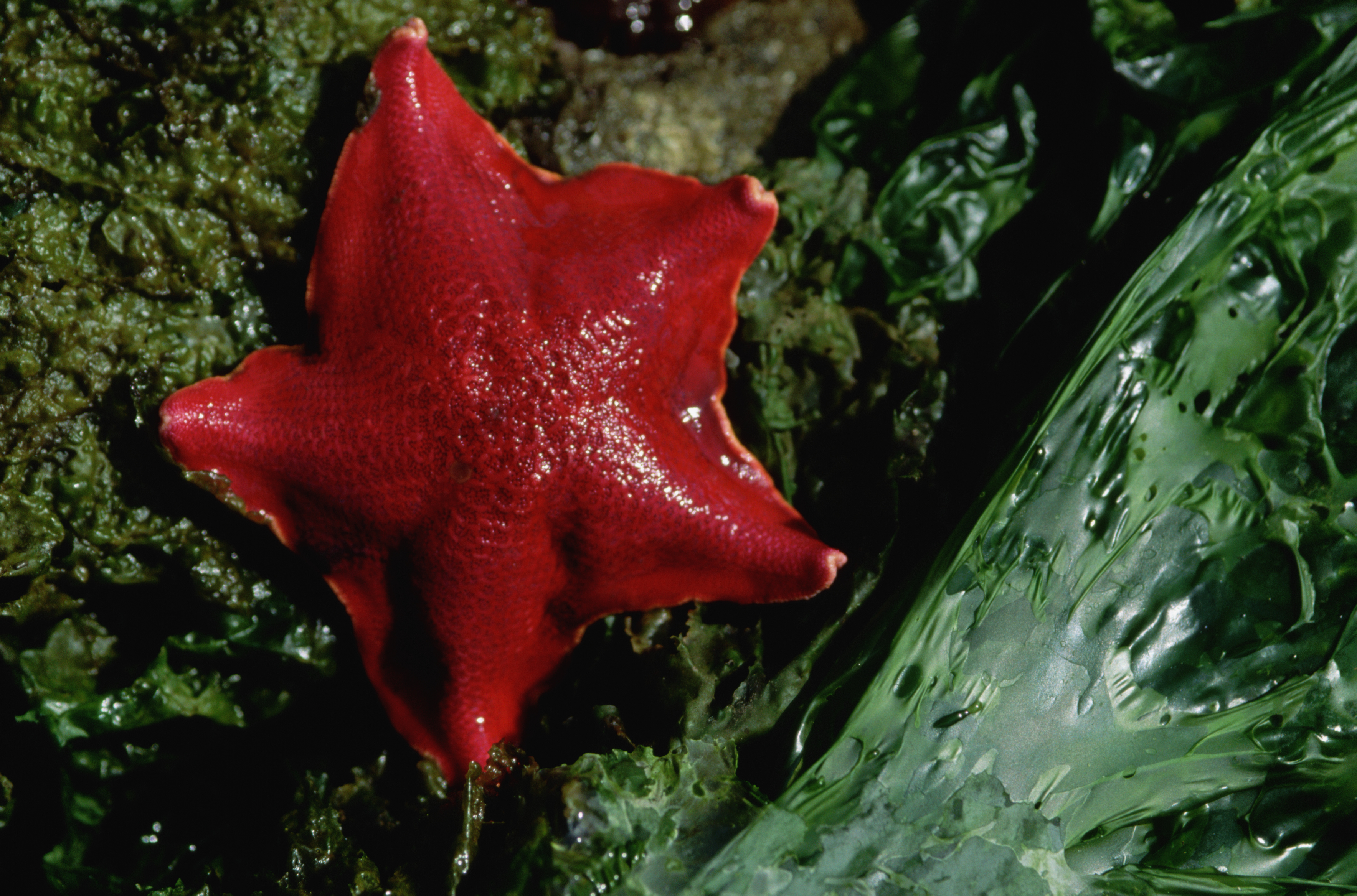'A disembodied head walking about the sea floor on its lips': Scientists finally work out what a starfish is
Scientists have discovered something strange happened to starfish over the course of their evolution, and they ended up as heads scampering around the seafloor.
Scientists have finally solved the puzzle of starfish's unique bodies. As it turns out, sea stars and other echinoderms are essentially walking heads with little to no body.
Echinoderms — sea stars, sea urchins, sea cucumbers, and their relatives — have unique bodies that have long puzzled evolutionary biologists. These animals evolved from bilateral organisms — those that have two symmetrical sides — but somehow they evolved a radial body plan, meaning their body parts are arranged around a central axis. In the case of adult sea stars, five (or more) arms emanate from a central structure.
They are among the few members of the clade Bilateria, which includes everything from worms to humans, to have discarded this original form. Sea stars' planktonic larvae, however, are still bilateral, which scientists believe is evidence of their ancestors' bilateral body form.
Scientists have several hypotheses that could explain their weird bodies.
Related: Why do animals keep evolving into crabs?
One, known as the duplication hypothesis, posits that echinoderms retained a general bilateral body plan and simply multiplied it — with each arm of a sea star, for example, exhibiting the same bilateral form of its more typical relatives. This hypothesis suggests that the anterior, or head region, is positioned at the center and that there are five posterior regions radiating outward — the arms.
The stacking hypothesis alternatively proposes that the top of a sea star is the posterior end, with the rest of the body stacked beneath it, leading to the anterior at the bottom.
Get the world’s most fascinating discoveries delivered straight to your inbox.
But in a new study, published Nov. 1 in the journal Nature, researchers argue that neither of these hypotheses is accurate. Instead, they suggest that over time, echinoderms lost nearly all of their trunks and that their head is their body.
To locate the head and work out their body structure, the researchers ran genetic tests on bat stars (Patiria miniata) to determine which types of genes were expressed in each area of the animal's body.
"We made slices of the sea star and sequenced each slice to construct a 3D model of the messenger RNA [mRNA] across the body," lead author Laurent Formery, a developmental biologist at Stanford University's Hopkins Marine Station, told Live Science.
The researchers then used fluorescent dye that highlighted particular types of mRNA, enabling them to see the mRNA under a fluorescent microscope and identify where it was expressed in the sea star's body.
"We found that anterior genes are expressed all the way to the tip of the arms," Formery said. Genes coding for more posterior regions were expressed at the outer edges of the arms. If the duplication hypothesis was true, the anterior genes would be expressed at the tips of the arms. And if the stacking hypothesis was true, they would likely be expressed on the central, top side of the organism.
Intriguingly, this is likely the case even in seemingly bilateral echinoderms such as sea cucumbers. The sea cucumber body plan superficially appears to be typically bilateral, but it too exhibits a radial body plan. It is probably a stretched-out head laying on its side rather than a head with a trunk, despite its resemblance to a chubby worm, according to the researchers.
"Although a slight oversimplification, the findings suggest that one could think of the body of a starfish (at least in terms of the anterior–posterior identity of its surface tissues) as a disembodied head walking about the sea floor on its lips — the lips having sprouted a fringe of tube feet, co-opted from their original function of sorting food particles, to do the walking," Thurston Lacalli, a biologist at the University of Saskatchewan in Canada, who was not involved in the research, wrote in a News & Views article.
It is unclear why echinoderms developed this novel body plan. Bilateral body plans have been incredibly successful over the course of evolutionary history. Echinoderms first emerged at the start of the Cambrian (541 million to 485.4 million years ago) — a period during which an enormous diversity of organisms emerged.
"If you look extant animals, all of their body organization types originated about at the same time," Formery said. So, while the evolutionary forces in play at that time led to our own bilateral symmetry, something strange happened to the echinoderms and they ended up as heads scampering around the seafloor.

Richard Pallardy is a freelance science writer based in Chicago. He has written for such publications as National Geographic, Science Magazine, New Scientist, and Discover Magazine.




